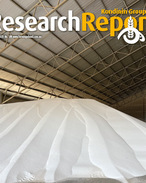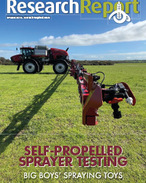This article is 8 years old. Images might not display.
WA Department of Agriculture and Food research officer Geoff Thomas said leaving it uncontrolled could harbour pests and diseases.
While it was too early in the season to determine how severe the risk could be, Thomas said it was better to prepare for the threat.
“Many growers have already been busy spraying weeds to preserve soil moisture and nitrogen levels in their paddocks, reducing the risk of the green bridge,” Thomas said.
“Recent hot weather could also help reduce survival of regrowth and disease inoculum, however, if there is further significant rainfall before the start of the cropping season, they could build up again.
“Given the risk, it would be wise for growers to factor the cost of pest and disease mitigation into their cropping budget.”
Thomas said the greatest risk to grain crops was if the green bridge survives through autumn and was still present as new crops emerge.
There is also an elevated risk of cereal rusts carrying over into crops this year, particularly barley leaf rust, which was widespread last year.
“A green bridge could encourage early build-up of insect vectors of viruses, which could lead to early infections of Beet western yellow virus in canola and barley yellow dwarf virus and wheat streak mosaic virus in cereals,” Thomas said.
“It is important to control the green vegetation along fencelines and road verges, especially those next to potential cropping paddocks.
“Greenery around tanks, sheds and troughs also pose a green bridge risk to nearby crops and should be sprayed out.”
Thomas said variety selection and crop monitoring would be crucial this year to optimise yield potential.
“Growers considering sowing early, due to good sub-soil moisture levels, are reminded to monitor crops for disease as the season progresses, as early sown plants often have greatest exposure to green bridge inoculum.
“These early sown plants will also have greater chance of their crop canopy and crucial grain filling period being exposed to weather conditions favourable for disease.”
“It is worth budgeting for seed dressing, in-furrow or foliar fungicides and insecticides to avoid getting caught out if there is a problem,” he said. “If the risk doesn’t eventuate, then this expenditure can be saved.”























